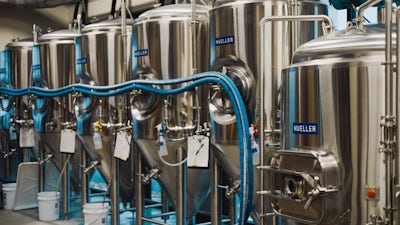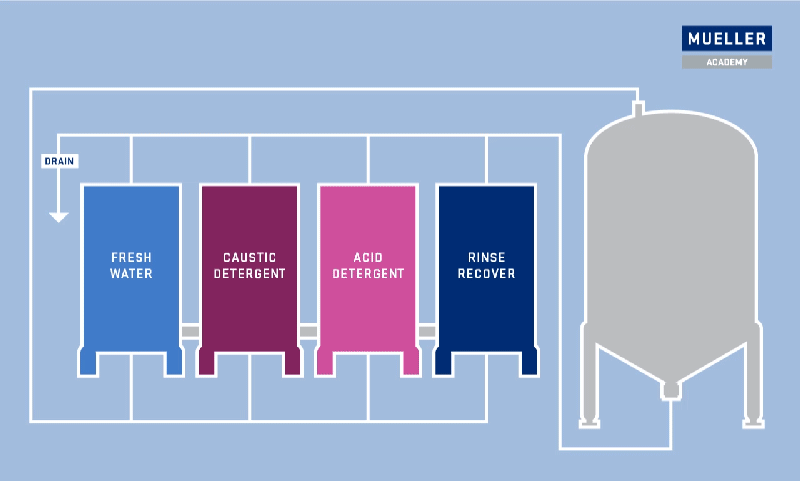The Basics of Clean-In-Place in a Brewery
- Share on Facebook
- Share on LinkedIn
- Share on Email
-
Copy Link
-
Share Link
- Brewing
- July 18, 2019
- 3 Minute Read
- Share on Facebook
- Share on LinkedIn
- Share on Email
-
Copy Link
-
Share Link

Introduction
You put your reputation on the line every time someone drinks your beer. The best way to ensure every pint you pour is worthy of putting your brand on it is to have a consistent and thorough cleaning regimen. Clean-in-place (CIP) systems are an important component of every cleaning program.
There are a lot of parts to a successful CIP program, so let's start from the beginning.
What Is CIP?
Clean-in-place is the process of cleaning professional brewing equipment without disassembly or having to transport it to a different location. It comes with several benefits over the traditional manual cleaning.
Advantages of CIP
Clean-in-place has become the industry standard method for cleaning because it eliminates a majority of the human error element, saves you money on chemicals, and reduces your exposure to harmful chemicals.
- Reduced Human Error: Manual cleaning can be risky. You might miss some spots or cross-contaminate your scrubbing brush between steps, which can result in spoiled beer.
- Saves Money on Chemicals: A recovery-type CIP system allows you to use a batch of chemicals several times, which will save you money in the long run.
- Reduced Exposure to Harmful Chemicals: Modern CIP systems are self-contained and automated, which limits your exposure to harmful cleaning chemicals.
How CIP Works
Clean-in-place systems use several holding tanks to store their chemical solutions. The chemicals are pumped out of the storage tanks and into the tanks you are cleaning. Typically, a spray ball is used within the tank to coat all the interior surfaces with the chemicals. The chemicals that are used to clean the tank are pumped back out and into the CIP storage tank to be used several more times before being replaced.
Cleaning Cycle
- Pre-Rinse: Water is used to wash away a majority of the soil.
- Caustic Wash: Caustic soda (sodium hydroxide) is used to break down all organic soils and is captured to be used again.
- Rinse: Water is used to rinse the tank and is often recovered.
- Acid Wash: Phosphoric acid is used to remove any beer stone buildup and is captured to be used again.
- Rinse: Water is used to rinse the tank and is then drained
- Sanitization: PAA (peracetic acid) is used to sanitize and disinfect the tank
Vacuum relief is just as important to your bright tanks and fermenters as CIP is to your beer. Without proper vacuum relief, your tanks run a high risk of imploding. Understanding the basics of vacuum relief in a brewery is important to avoid costly mistakes.

More from Mueller Academy
- Introducing Our New Membrane-Based Water for Injection (WFI) Skids
- Manway Gasket Installation & Bushing Adjustment
- How to Decide Between a Horizontal & Vertical Milk Tank
- MES & PSG Feedwater Quality Requirements
- On-Site Tank Fabrication Under Deadline
- Finding the Right Finish: Understanding Polishing
- Increase the Capacity of Your Clean Utility Equipment
- Balancing a Mueller Multiple Effect Still (MES)
- The Different Types of Steam in Industrial Steam Generation